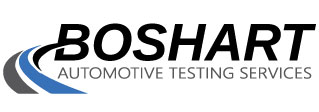The California Air Resources Board recently announced new changes to California’s Truck and Bus Regulation.
Their press release appears below.
FOR IMMEDIATE RELEASE
March 6, 2014 | NEWS RELEASE 14-16
ARB unveils proposed changes to California’s Truck and Bus Regulation
Board will offer new flexibility options while still protecting air quality
SACRAMENTO – The California Air Resources Board today unveiled proposed amendments to its Truck and Bus Regulation. The amendments are designed to provide new flexibility to truckers working to clean up their aging diesel fleets while still protecting the important emission benefits the regulation provides. Board members will consider the changes at the April 24 hearing.
The proposed changes were developed after some stakeholders voiced concerns regarding their ability to comply with the regulation at the October 2013 Board hearing. Truckers were able to expand on these concerns at five ARB-sponsored public workshops held across the state in December.
“The trucking community spoke and we listened,” said ARB Chairman Mary D. Nichols. “The good news is that we will not have to sacrifice the state’s air quality goals to assist fleet owners.
These amendments, which include more flexible deadlines and increased opportunities to access incentive funding, will further our emissions reduction goals by better ensuring that fleets can meet the requirements of the regulation.”
Nichols added that if the Board approves the changes, fleet owners who have already made investments to upgrade their vehicles will be provided with some benefits including additional time beyond what is currently allowed to keep trucks they have retrofitted.
“We recognize the huge investments that many business owners have already made in order to meet the requirements of the Truck and Bus Regulation,” Nichols said. “Their efforts have gone a long way toward helping us to meet our mandatory deadlines and we laud them for what they have accomplished.”
The proposed amendments provide additional regulatory flexibility to small fleets, lower mileage fleets and fleets in certain areas that have made substantial progress towards cleaner air. If approved, the amendments would better protect the emissions benefits of the regulation that are necessary to meet California’s air quality obligations under the federal Clean Air Act, as well as the goals of the ARB’s Diesel Risk Reduction Plan.
The proposed changes include:
* A longer phase-in period for diesel particulate matter (PM) requirements for trucks that operate exclusively in certain rural areas with cleaner air;
* Additional time and a lower cost route for all small fleet owners to meet their PM compliance requirements, while reopening opportunities for these fleet owners to apply for and receive public incentive funding;
* A compliance route for owners currently unable to qualify for a loan to finance required upgrades;
* Adjusted schedules for low-use vehicles and certain work trucks;
* Recognition of fleet owners who took action to comply by providing additional “useable life”
for retrofit trucks and reducing near-term compliance requirements.
Overall these amendments would also ensure that, by 2020, the annual emission reductions would be at the same level as with the existing regulation.
For more information, please see: Proposed Amendments to the Truck and Bus Regulationhttp://bit.ly/1fbV67c
Fast Facts on Diesel Emissions:
* Diesel exhaust contains a variety of harmful gases and more than 40 other known cancer-causing compounds. In 1998, California identified diesel particulate matter as a toxic air contaminant based on its potential to cause cancer, premature death and other health problems.
* The Truck and Bus Regulation (Regulation) was adopted in 2008 to clean up harmful emissions from nearly all heavy-duty diesel trucks operating in California. The Regulation was amended in
2010 to provide economic relief to truckers affected by the recession, particularly small fleets, by delaying the first compliance requirements by one year and extending the time the truck could be operated before needing to be replaced.
* Approximately 1 million trucks operate annually on California highways. Roughly 625,000 are based out of state. Of the remaining 400,000 registered in California, about half are in small fleets of three or less.
* The Regulation currently requires most heavy trucks in California to install soot filters or upgrade to newer models with filters by Jan. 1, 2014, and that nearly all trucks have them installed by Jan. 1, 2016.
* For small fleets (three or fewer vehicles), Jan. 1, 2014, was a critical compliance milestone because for the first time at least one vehicle in each fleet needed to comply.
* At its October 2013 meeting, the Board heard an update on the Regulation and agreed with staff’s proposal to move forward with a number of near-term strategies to provide flexibility while not compromising the overall reduction and health benefits to be achieved by the Regulation.
* In 2000, the ARB adopted its Diesel Risk Reduction Plan, a blueprint for developing regulations to address diesel emissions from all sources including garbage trucks, urban buses, construction equipment, port trucks and fuels. For more information, see Diesel Risk Reduction Plan http://www.arb.ca.gov/diesel/documents/rrpapp.htm/.
* Anyone with questions on current regulatory requirements can visit ARB’s TruckStop website http://www.arb.ca.gov/truckstop, call 866-6DIESEL or email8666Diesel@arb.ca.gov.
CONTACT:
Karen Caesar
(626) 575-6728
kcaesar@arb.ca.gov
 At a time when demand for qualified technicians exceeds supply, industry educators are sounding the alarm. They want owners of repair shops, dealerships and national chains to join together to overhaul the system that promotes careers and education in the automotive field.
At a time when demand for qualified technicians exceeds supply, industry educators are sounding the alarm. They want owners of repair shops, dealerships and national chains to join together to overhaul the system that promotes careers and education in the automotive field.